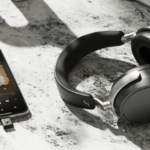![]()
Scientists have advanced a brand new synthetic intelligence software that may turn any cellphone into a watch–tracking device.
Eye-tracking generation – which can decide where in a visual scene human beings are directing their gaze – has been extensively used in mental experiments and advertising and marketing studies,however the required pricey hardware has kept it from finding customer applications.
further to making current applications of eye-monitoring generation greater accessible, the gadgetevolved by using researchers at Massachusetts Institute of generation (MIT) and college of Georgia can also enable new computer interfaces or assist detect signs of incipient neurological ailment or mentalcontamination.
“due to the fact that few human beings have the outside gadgets, there’s no big incentive to developpackages for them,” said Aditya Khosla, an MIT graduate pupil.
“due to the fact there are no packages, there’s no incentive for humans to buy the gadgets. We conceptwe should wreck this circle and try and make an eye fixed tracker that works on a unmarried cellular tool,the usage of just your front–going through digital camera,” he said.
Researchers built their eye tracker using machine learning, a method wherein computers discover ways to perform duties by looking for styles in massive sets of schooling examples.
Their education set includes examples of gaze styles from 1,500 mobile–device users, Khosla said.formerly, the biggest statistics sets used to educate experimental eye-tracking systems had topped out at approximately 50 customers.
The researchers report an initial spherical of experiments, the use of education facts drawn from 800mobile–tool customers.
On that foundation, they have been able to get the machine‘s margin of blunders all the way down to 1.5centimetres, a twofold development over preceding experimental structures.
They later obtained data on every other seven hundred humans, and the additional educationinformation has reduced the margin of errors to about a centimetre.
To get a feel of ways larger education sets may enhance overall performance, the researchers educatedand retrained their machine the use of one-of-a-kind-sized subsets of their information.
the ones experiments advise that approximately 10,000 training examples should be sufficient to lowerthe margin of blunders to a half of-centimetre, which Khosla estimates could be top sufficient to make themachine commercially possible.
To collect their training examples, the researchers developed a easy utility for telephone devices.
The software flashes a small dot somewhere on the device‘s display, attracting the consumer‘s attention, then briefly replaces it with either an “R” or an “L,” educating the consumer to faucet either the right or leftside of the display.
correctly executing the tap ensures that the consumer has virtually shifted his or her gaze to thesupposed area.
throughout this manner, the tool digital camera constantly captures photographs of the person‘s face.
The records set carries, on common, 1,600 photographs for every person.
download the gadgets 360 app for Android and iOS to stay up to date with the modern day techinformation, product critiques, and one-of-a-kind offers at the popular mobiles.
Tags: Apps, artificial intelligence, MIT, Mobiles, technological know-how



